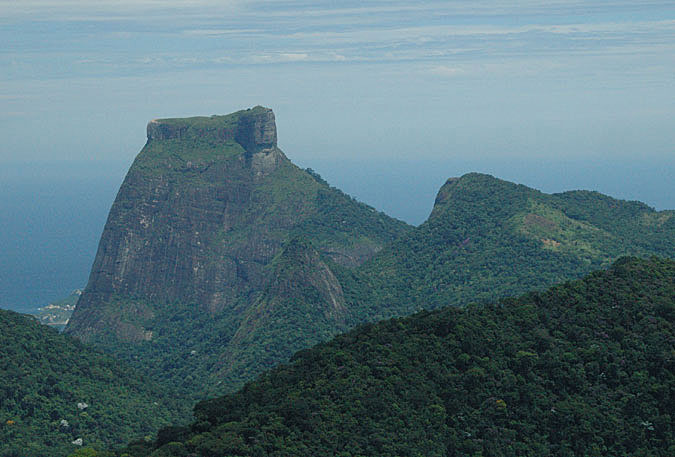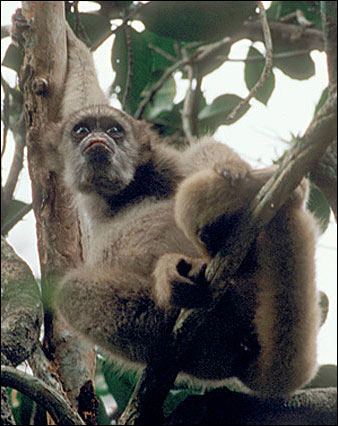Exploring the Amazing Biodiversity of Brazil
In Brazil, the DSF “Hotspots” film team explored the Mata Atlantica Rain Forest along the Eastern Coast of the country, including the Parque Nacional da Serra Dos Orgas, Iguacu Falls and select locations for rare primates in Sergipe and Minas Gerais states.
The Atlantic Rainforest of Brazil hosts some 20,000 plant species of which 8,000 are endemic making the region the highest in the world for plant endemism. This area is equally important for its concentration of primates, with 25 species of which 80% are endemic including the Southern and Northern Muriqui.

In Sergipe, after much searching through severely degraded habitat, one highly endangered Coimbra Titi monkey was seen for seven seconds, in a 750 acre forest surrounded by sugar cane plantations and huge burnt out areas.
Marcelo Cardoso de Sousa is a key researcher with the Zoological Laboratory at the University of Tiradentese. He is trying to get a handle on the fragmented distribution of this species,and what conservation options exist for it.
Maria Cecilia Martins Kierulff, a lead scientist with Conservation International, is deeply involved throughout the country in working with her teams to assemble critical data offering options for such species.
 In the State of Minas Gerais, at the Fozenda Montes Claros Estagao BIologica Caratinga, the DSF “Hotspots” film team was welcomed by the CI staffers and the primatologist Jean-Philippe Boubli who is trying to better understand and help save the largest monkey in the Americas, the Northern Muriqui, a flagship species for Brazil. The species is down to fewer than 1,000 individuals.
In the State of Minas Gerais, at the Fozenda Montes Claros Estagao BIologica Caratinga, the DSF “Hotspots” film team was welcomed by the CI staffers and the primatologist Jean-Philippe Boubli who is trying to better understand and help save the largest monkey in the Americas, the Northern Muriqui, a flagship species for Brazil. The species is down to fewer than 1,000 individuals.
Strictly vegetarian, 50% of the Northern Muriqui diet is leaf material, Dr. Boubli points out. In the dry season, a single fire could easily sweep across their entire habitat. During the more than twenty years of continuous research presence, that has fortunately not happened. Fragmented habitat surrounding Estagao Biologica Caratinga offers possibilities for corridors that could avoid genetic and demographic bottlenecks. That is partly the goal of the conservation work here. It is DSF’s goal in “Hotspots” to shine a “spotlight” on these remarkable creatures and the extraordinary team of researchers working to save them.
For more information:
> International Conservation in Brazil
Here is an English Translation
